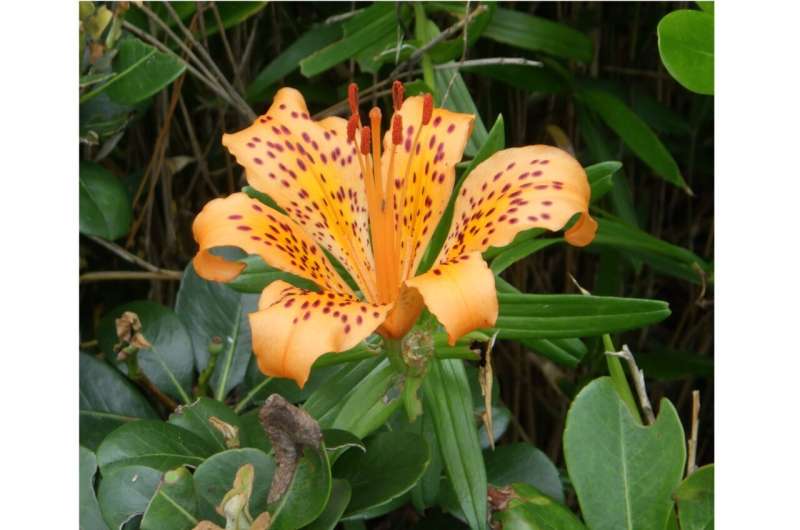This article has been reviewed according to Science X's editorial process and policies. Editors have highlighted the following attributes while ensuring the content's credibility:
fact-checked
trusted source
proofread
New Japanese lily species identified, first addition to sukashiyuri group in 110 years

A new species of the Japanese lily known as sukashiyuri has been identified for the first time since 1914 by a research team led by Dr. Seita Watanabe, a specially appointed assistant professor at the Botanical Gardens and the Graduate School of Science at Osaka Metropolitan University. The findings were published in Taxon.
Dr. Watanabe questioned the classification used up to now for sukashiyuri group, which usually has orange flowers. These lilies have high ornamental value, having been exported from Japan for more than two centuries. There have been only four taxonomic groups, but Dr. Watanabe and his team sought evidence to prove that there were more.
Traveling across Japan to observe the lilies, record images, gather specimens, and obtain DNA from plant materials, the research team members conducted a detailed analysis of the form and structure of the plants and their DNA. The results of their extensive work revises the conventional classification into eight taxons, including what they have named Lilium pacificum, the first new species of Japanese lily in 110 years.
Lilium pacificum grows on coastal areas facing the Pacific Ocean on Honshu from Ibaraki Prefecture south to Shizuoka Prefecture and the Izu Islands.
"It has an interesting characteristic: the tips of its leaves are curved into a claw-like shape," Dr. Watanabe said. "Based on the new understanding of these eight taxonomic groups, we found that seven are endemic to Japan, each adapted to its environment, whether coastal or mountainous, and evolving unique traits."
Dr. Watanabe added, "Our research shows that these plants have differentiated through complex processes, and we hope that our work will provide clues for speciation studies. In the past, individual differences may have been overlooked because of the apparent simplicity of the plants. Through this research, I was reminded of the importance of morphological observation."
More information: Seita T. Watanabe et al, Biosystematic studies on Lilium (Liliaceae) II. Evolutionary history and taxon recognition in the L. maculatum–L. pensylvanicum complex in Japan, Taxon (2024). DOI: 10.1002/tax.13141
Provided by Osaka Metropolitan University


















